Domestic new energy internal competition hurts BBA the most
![]() 09/27 2024
09/27 2024
![]() 518
518
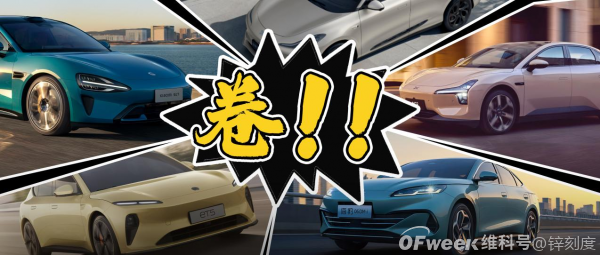
It's time to re-examine 'internal competition'
Written by Meng Huiyuan
Edited by Chen Dengxin
Typeset by Annalee
Recently, BMW's return to a 'price war' has sparked heated debates. Regardless of the actual situation, one undeniable fact is that BMW, without price reductions, has indeed lost much of its brand advantage in the domestic new energy vehicle market.
As competition intensifies, almost all automakers are facing severe market challenges. According to the China Passenger Car Association, 136 models saw price reductions in the first five months of this year alone, with the scale of reductions exceeding 90% of the total reductions for the entire year of 2023 and surpassing the total reductions for 2022. The average purchase price of the new energy vehicle market fell from 191,000 yuan in March 2023 to 172,300 yuan in March 2024, marking a 9.8% year-on-year decline in new energy vehicle prices over one year.
Not only is there competition on price, but automakers' executives acting as car anchors and driving family cars into race tracks have also become new marketing trends. This has led to automakers getting caught up in controversies related to 'seeking attention' and 'generating traffic.' However, whether it's 'price competition' or 'marketing competition,' they are both superficial forms of competition to some extent. As the industry moves deeper into its second half, both automakers and consumers should re-examine the concept of 'internal competition,' focusing not just on short-term benefits but also on long-term development.
Automakers are hard-pressed by 'price competition'
'Inquiring about the latest promotional prices is the most common question we receive,' revealed a salesperson. Whenever news of price reductions by automakers spreads or new products are launched, it attracts more customers to inquire or test-drive in-store. 'Models without discounts are harder to attract customers to inquire proactively.'
It is not difficult to see that the 'price war' that has persisted since 2023 and shows no signs of stopping has seemingly 'spoiled' consumers, and the situation of 'killing a thousand enemies but hurting oneself in the process' among automakers continues to intensify.
According to data provided by BloombergNEF Smart Mobility Analyst Lv Jinghong, the average price reduction for domestic new energy vehicles has increased from 6,700 yuan in the first quarter of last year to 16,000 yuan in the first quarter of this year. This has led to the weighted average selling price of new energy vehicles in the first quarter of this year almost matching that of traditional gasoline vehicles, with two-thirds of new energy vehicles priced lower than their gasoline counterparts in the same category.
'The first half's round of price reductions mainly put significant pressure on products priced between 80,000 and 200,000 yuan in the market,' said an industry analyst. This price range has a lower penetration rate of new energy vehicles and is the main battlefield for brands to compete for.
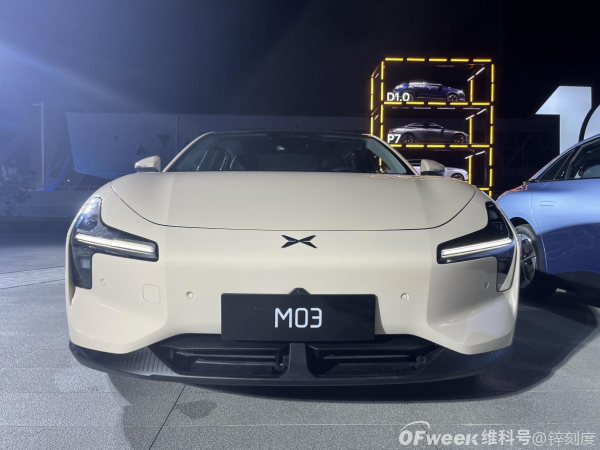
Xpeng M03, pushing the price of smart driving down to the 100,000 yuan level
Looking at the entire industry, since Tesla announced another round of price reductions of up to 15,500 yuan for its models in January; in February, BYD concentrated launched more than ten honorary versions of its main models within half a month, with the largest price reduction exceeding 30,000 yuan; within 12 hours of the honorary edition's launch, Wuling Starlight PLUS announced a price reduction from 105,800 yuan to 99,800 yuan; Changan Qiyuan A05's official starting price was reduced from 89,900 yuan to 78,900 yuan; Nezha Motors reduced the prices of multiple main models across the board, with the largest reduction reaching 22,000 yuan; ARCFOX reduced prices by 10,000 yuan for its SL03 and S7 honorary editions; until April, Xiaomi SU7's launch triggered a 'catfish effect,' with brands like Xpeng, AITO, Zeekr, Hyperion, and Aion either reducing prices or launching limited-time benefits, while automakers like FAW Toyota, Chery, Geely, and NIO all introduced trade-in subsidies...
Amidst intensifying competition, even Mercedes-Benz, BMW, and Audi (BBA) have had to lower their stance and significantly reduce prices at the dealership terminals. For example, Mercedes-Benz smart fortwo, with prices ranging from 179,000 to 225,900 yuan for its two-wheel drive versions, has seen price reductions of 10,000 to 20,000 yuan across its three models compared to the previous generation, earning it the nickname of being as cheap as 'cabbage.'
Recently, BMW, which announced a price increase three months ago but was later exposed to have returned to the 'price war,' has offered unprecedented discounts on its electric vehicles, including the iX1, i3, iX3, and i7, with reductions ranging from 100,000 to 300,000 yuan. Taking the BMW i3 as an example, its terminal discount has exceeded 150,000 yuan, meaning its actual bare car price in some markets has reached the true 200,000 yuan level, equivalent to a Geely-produced Zeekr 007 in the domestic self-owned pure electric vehicle market.
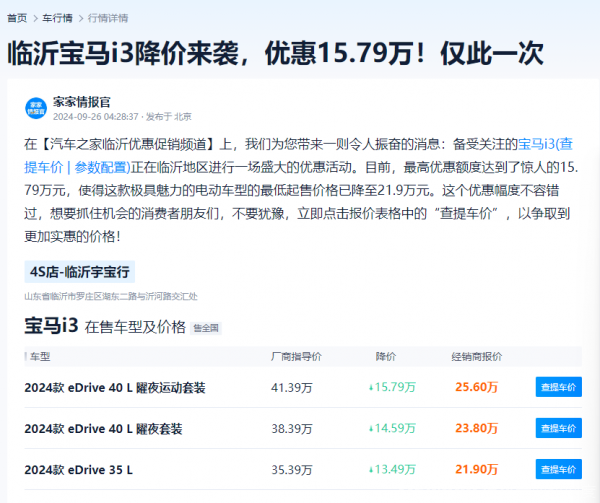
BMW i3 related pricing information
Although a BMW China spokesperson responded that BMW had not made any adjustments to its recommended retail prices recently, it is apparent that authorized dealers have independently decided to reduce retail prices based on market conditions. The root cause of this is that BMW has become too difficult to sell without price discounts – in August this year, BMW's total sales in the Chinese market were 34,800 units, a year-on-year decrease of approximately 40% and a month-on-month decrease of approximately 30%.
'Not to mention the previous models, but new cars now face stock competition as soon as they are launched, with very limited market growth. In this zero-sum game, everyone is fighting for a share of the pie, though new energy vehicles have a higher probability of getting a larger slice,' said an industry insider.
From live streaming to the racetrack
In the new energy vehicle sector, besides 'price competition' that can easily control entrants, product marketing methods have also become flashier.
One of the most typical directions is that more and more brand founders and automaker executives choose to build personal IPs, keen on interacting with consumers through live streaming, including test drives, Q&A sessions, product introductions, factory tours, and more, aiming to introduce product features more intuitively and share brand stories.
Specifically, among new automakers, Li Xiang, CEO of Lixiang One, has appeared on live streams multiple times before, attempting to achieve direct sales conversions through brand exposure and achieving quite good results.
In this wave of 'live streaming e-commerce,' Li Bin, CEO of NIO, was among the fastest responders. He conducted his first live stream on social media on March 14th, attracting over 10 million cumulative viewers that day. As a traffic leader, Xiaomi Motors followed closely, with Lei Jun starting a live stream titled 'Unexpected – Lei Jun Talks About SU7's Launch' on his personal Douyin account on April 18th afternoon, gaining over 830,000 new followers during the live stream and ranking top in the trending list. On August 13th, He Xiaopeng, Chairman and CEO of Xpeng Motors, conducted a live stream to test the range of the Xpeng G6 using its full battery, showcasing the range of this pure electric SUV. It is reported that this was He Xiaopeng's first live stream on his personal account.
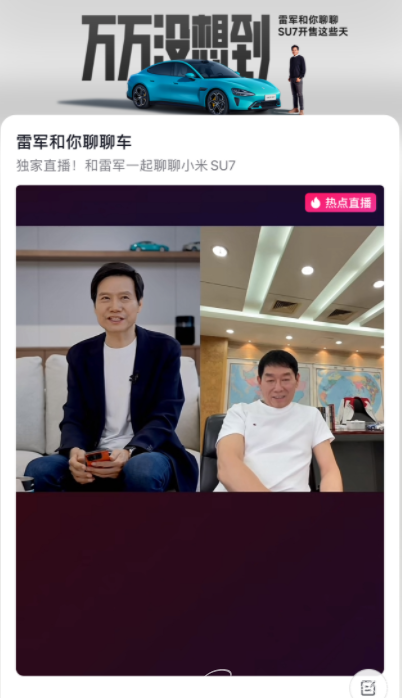
Lei Jun talks about SU7 on live stream
Traditional automakers couldn't sit idle either. On March 28th, Li Shufu, Chairman of Geely Holding Group, invited Yu Minhong for a three-hour live stream to explore Geely's satellite super factory together. On April 14th, Yin Tongyue, Chairman of Chery Holding Group, tested the long-distance high-speed advanced driving capabilities of the Star Era ET on a live stream, driving it himself. On April 15th, Wei Jianjun, Chairman of Great Wall Motor, kicked off his first smart driving live stream with the challenge of 'True Zero-Map, True Challenge: Zero Mistakes for Great Wall Motor's Smart Driving System.' On July 20th, Zhu Huarong, Chairman of Changan Automobile (000625.SZ), personally participated in 11 scenario challenges with six models (Avita 11, Avita 12, SL03, Deep Blue S07, Qiyuan E07, Qiyuan A07) and even drove an Avita 12 on a high-speed oval track, reaching speeds exceeding 220 km/h.
Of course, automakers' marketing festivities are not limited to live streams. Going to the racetrack has also become a routine operation: Xiaomi SU7 conducted lap tests on the Nürburgring, showcasing its performance in high-performance environments. It is reported that the Xiaomi SU7's performance version will have a combined power output of over 1,000 horsepower and will undergo upgrades to its suspension system and chassis; Alpha S Hyperion conducted lap tests on the Nürburgring as well, though specific lap times have not been announced, but some bloggers have estimated that its time could reach around 7 minutes and 10 seconds; the all-wheel-drive version of Zeekr 007 achieved a lap time of 1 minute and 41.740 seconds at the Zhejiang International Circuit, outperforming several overseas luxury brand models...
'Electric car lap tests,' as the name suggests, refer to electric vehicles undergoing lap tests on racetracks to assess their performance and competitiveness based on their actual performance in high-performance environments. Put more bluntly, racetracks are not straight lines, so achieving good lap times is not solely about 'stacking power.' It also involves a range of comprehensive performance factors such as tires, brakes, and suspension. Achieving good lap times demonstrates not just raw speed but the overall quality of a vehicle.
Therefore, while most civilian electric vehicles are positioned for daily commuting, taking family cars to the racetrack might seem like an 'abusive' move by automakers to grab attention on the surface. However, as more and more electric vehicle models begin to participate in track tests, their dynamic limits become apparent. This not only announces automakers' relentless pursuit of electric vehicle performance to the outside world but also prompts some consumers to consider lap times as a factor in their car-buying decisions.
Recently, after news of He Xiaopeng taking the new Xpeng MONA M03 to the racetrack was released, some bloggers revealed that the daily average of new orders for this model exceeded 2,000, with weekly sales exceeding 10,000 units. The positive impact of taking stock cars to the racetrack on sales is evident.
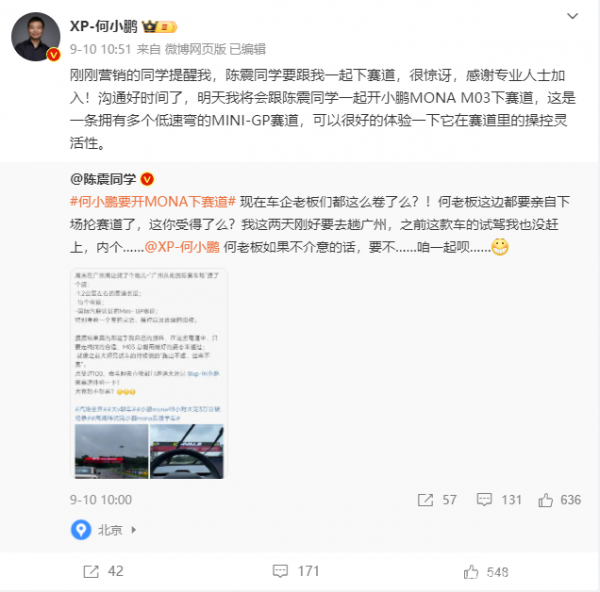
He Xiaopeng takes the new car to the racetrack
Technology is the ticket to the finals
If 'price competition' and 'marketing competition' are powerful means for automakers to stay in the game, then 'technological competition' is the key to helping automakers win the decisive battle in the new energy vehicle industry.
Practically speaking, while it is common to see automakers embroiled in marketing traffic wars and brand price wars, the situation is nearing white-hot intensity, but this battle will not be over in a year or two; rather, it will continue for many years. This means that the decisive battle in this industry will be a marathon. While some automakers have deeper technological accumulations, others are more adept at marketing or closer to user needs, yet none have fully dominated the lead so far. To break this stalemate, perhaps a technological breakthrough and moment of innovation is needed.
Currently, technology has become a must-talk topic for automakers in various public settings: He Xiaopeng said at the M03 launch, 'Xpeng Motors aims to become a global AI automotive company'; Lang Xianpeng, VP of Intelligent Driving R&D at Lixiang One, said, 'When we were working on mapless driving, we were already pre-researching end-to-end technology. Now that we're doing end-to-end, we're actually pre-researching the next-generation technology'; Yu Chengdong, Chairman of the Intelligent Automobile Solutions BU, said, 'This industry is very competitive, and we provide technology to help everyone compete'...
Taking BYD as an example, during the period when it did not produce new energy vehicles, its R&D investment accounted for less than 3% of its total revenue; however, in 2023, after BYD announced its full transition to new energy vehicle production, its R&D investment ratio increased to 6.6%, demonstrating the importance of technological research and development for new energy vehicle enterprises.

Image source: Rongzhong Finance and Economics
Compared to the first half of the automotive industry's transformation, the 'style' has changed in the second half – on the product side, automakers are no longer solely focused on driving range, exterior design, and power performance but are increasingly emphasizing showcasing their technological prowess; on the consumer side, car-buying decisions have become more rational, with price no longer the sole criterion. Safety and quality have also become important considerations in car purchases.
In other words, once a company can make significant breakthroughs in areas such as battery life, autonomous driving technology, or in-car smart interaction, it will directly win market recognition and thus escape the pure 'price war.' However, in reality, many companies still have to participate in brutal price competition for survival, but they are also aware that only those focused on technological innovation can stand out in the market and truly drive industry development.
'The second half starts with a price war but will ultimately be won through technological and value battles,' as Wang Xia, President of the China Council for the Promotion of International Trade Automotive Industry Committee, said. The exploration of technological routes still has a long way to go, such as tapping the potential of hybrid technology, commercializing solid-state batteries and hydrogen fuel cells, and integrating AI into vehicles. These are all vast technological lowlands with significant potential. 'We must deliver differentiated value experiences to consumers through core technological breakthroughs and prevent 'price wars' from dragging us back to the old path of homogenized competition, losing our ability for sustainable development,' Wang added.








